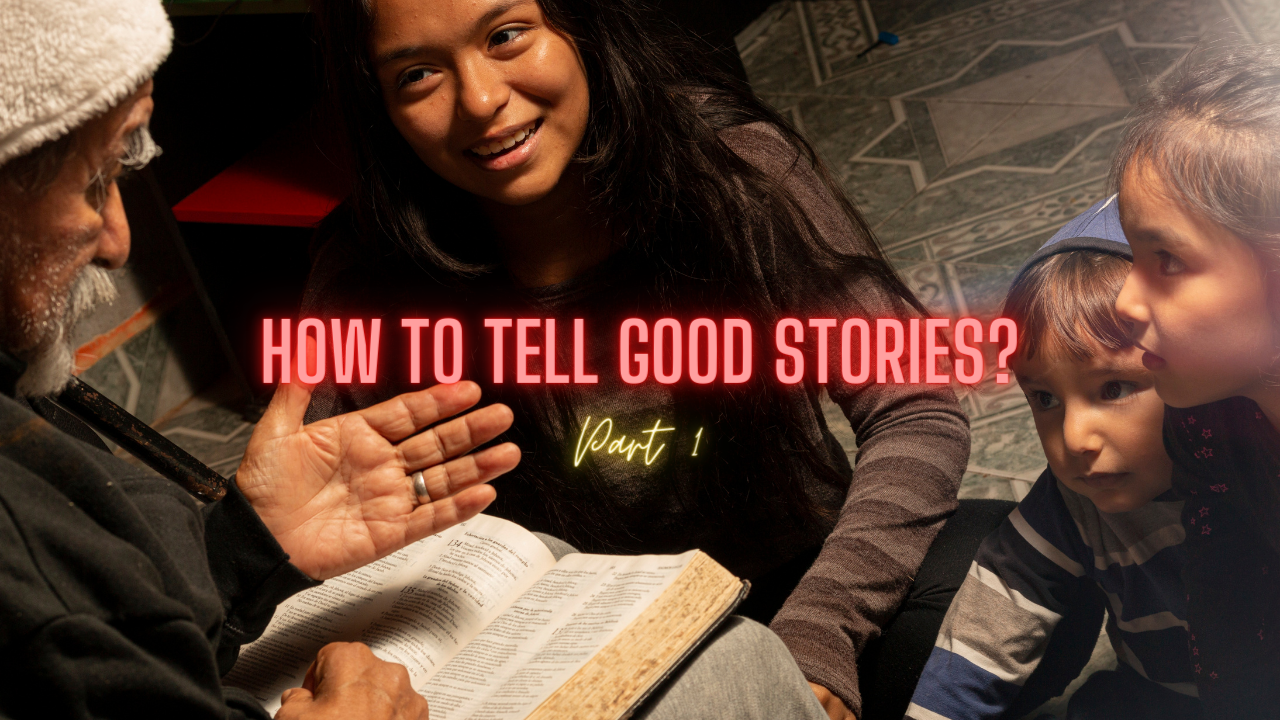How to tell good stories? (part 1)

We all like stories. And we love telling stories as well. This skill of telling good stories is very useful in many domains including teaching, presenting, marketing, writing. Even outside the work, this skill is very useful to connect with people quickly. Everyone loves listening to a friend or a family member telling good stories. I am reading a book on this topic called “Storyworthy” by Matthew Dicks. Matthew is a professional storyteller. He has won story telling competitions. Frankly, before reading this book, I didn’t even know such competitions existed. In the book, he said that his wife fell in love with him because of his storytelling. He is also teaching others the skills of storytelling. He shares a lot of tips in this book. The content is so useful that I am going to write a summary of this book in more than one parts.
In this part, we are going to see what makes a good story and how to find them. It turns out that we all have stories. A lot more than we think. Matthew had many tragic moments in his life that he now uses as base for some of his stories. However, he claims that one doesn’t need to have a lot of large-scale events to tell good stories. He uses a few techniques to find stories in everyday life. We will see some of them.
First, let’s see what makes a good story. Matthew writes that a good story needs to be personal. Yes, fiction stories can be entertaining and fun to tell as well. But, the listeners are most engaged when someone tells a story about themselves. A set of events that actually happened in their life. A major reason for this connection is that those personal events can show vulnerability, honesty and transparency. This is usually lacking in folktales and even the stories about someone else. If you want to talk about some story of your friend, you better tell it from your viewpoint and how it affected you.
A good story must also reflect change over time. If everything is constant throughout the story, it is not interesting. Which is why the stories of what we did in our vacation trips is not that engaging. Unless, there is a specific event in them, which changed us. Otherwise, it is just a list of places we visited and things we did. Nothing really changed. This kind of explains why some of my blog posts are not very engaging and some are. For example, in my story of starting my PhD, there is a change. Initially, I was not much into doing research. But it changed by the end of the story. Although, now that I am reading this book, I feel that many elements are lacking in that story, and it can be told in an even better way.
There is also a difference between a written story and an oral story. This book mostly focuses on the oral storytelling. It shares a ton of tips to perform a story well on stage (for some competition). Not a lot of us are going to do that. Hence, I’ll skip those parts. Read the book if you are curious about them. I was mostly interested in the things that can be applied to written stories to make my blogs more engaging and fun.
Back to the topic, Matthew then describes tips to find more stories in our everyday life. It turns out that a lot of things are happening in our life, but we are not seeing them as stories. In fact, he claims that we are not even experiencing them well enough. The first tip he suggests is to spare some time at the end of each day and think about what happened in the day. If we had to tell a story from just that day, what would we talk about? Write it down. Not the entire story, just the 1 line snippet. In the book, he gave an example of how to write that. This technique is not going to generate stories in the beginning, but he claims that we will start to slow down our life and slowly develop a way to capture important moments. He suggested this exercise to everyone, regardless of whether someone wants to find stories or not. In the book, he said that many people thanked him for this tip because they started experiencing the life better. Quote from the book “As you begin to take stock of your days, find those moments — see them and record them — time will begin to slow down for you. The pace of your life will relax”. I decided to give it a try. I mean, if it takes just 5 minutes of the day, then why not? I started writing snippets in my habit tracker sheet (so that I don’t miss any day). It has been two weeks. So far, it hasn’t generated any big ideas on which I can write blogs, but I found more things to talk about to my friends and family.
Another way to find stories is to make a table for “First, last, best, worst”. Write those 4 words on the top row. The column headings are prompts like car, date, gift etc. Then think about what was your first car, last car, the best car and the worst car. Same for other prompts. This can generate potential stories. This is more like a game. I haven’t tried it yet.
He describes one more way to find stories. Some of us have experienced a never-ending stream of random thoughts in the brain. Specially when we try to sleep. Brain starts thinking about one topic and within 5 minutes, we are in an entirely different territory. The idea is to capture those random thoughts. He suggested doing something called “Crash and Burn” exercises. Here, we take a paper and a pen and just write down whatever is going in our brain for the next 10 minutes. The rule is that the pen must not stop. The grammar or the spellings are not important. Don’t restrict the brain to stick to a particular idea. Let it wonder like it normally does from one topic to the other. No structure at all. Don’t judge yourself as well. Write everything. This brain dumps can help us find many ideas.
I tried a 10 minute “Crash and Burn” this week. It was painful (also literally). I should have followed his tip to use pen and paper instead of typing. My fingers were paining near the end. It is just so hard to ignore the grammar and the spellings. It didn’t produce any storyworthy ideas, but it did produce an idea for something related to my research project. So, not a complete waste of time. Besides, I had low expectations anyway since it was my first attempt.
That’s all for today. Hope you liked it. In the next part, we will see his tips about crafting the story and telling it in a way that engages the audience. Stay tuned.
My favorites:
Video: 10 rules to follow
Quote: “Of course everything happens for a reason, you just have to make up a reason” - Urooj Ashfaq (comedian)
